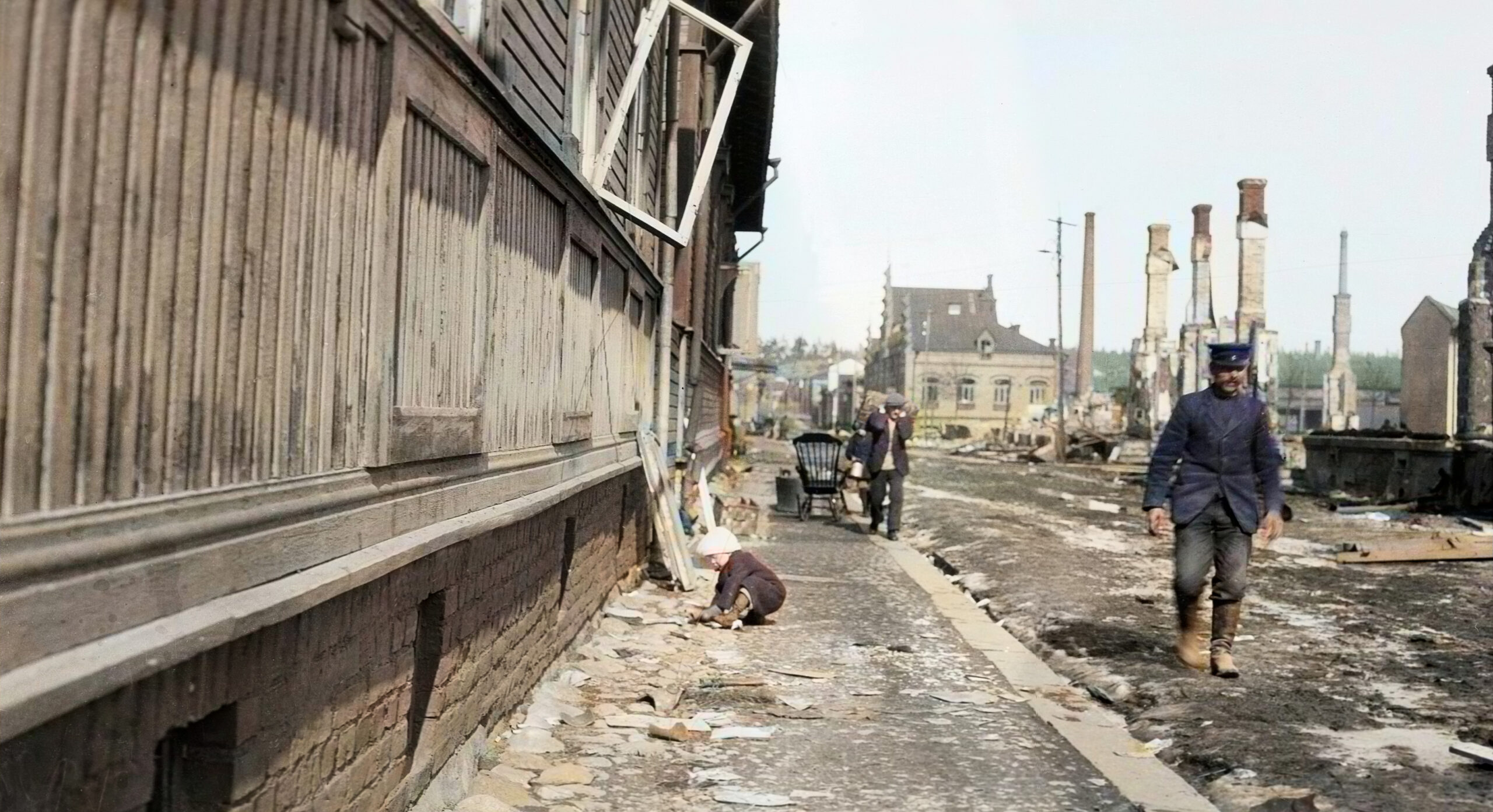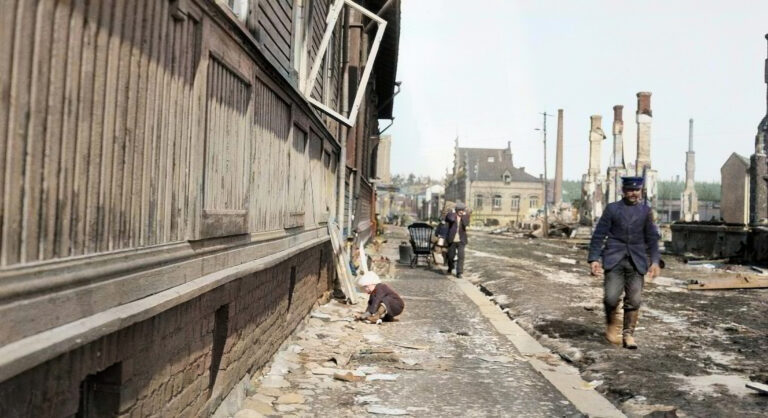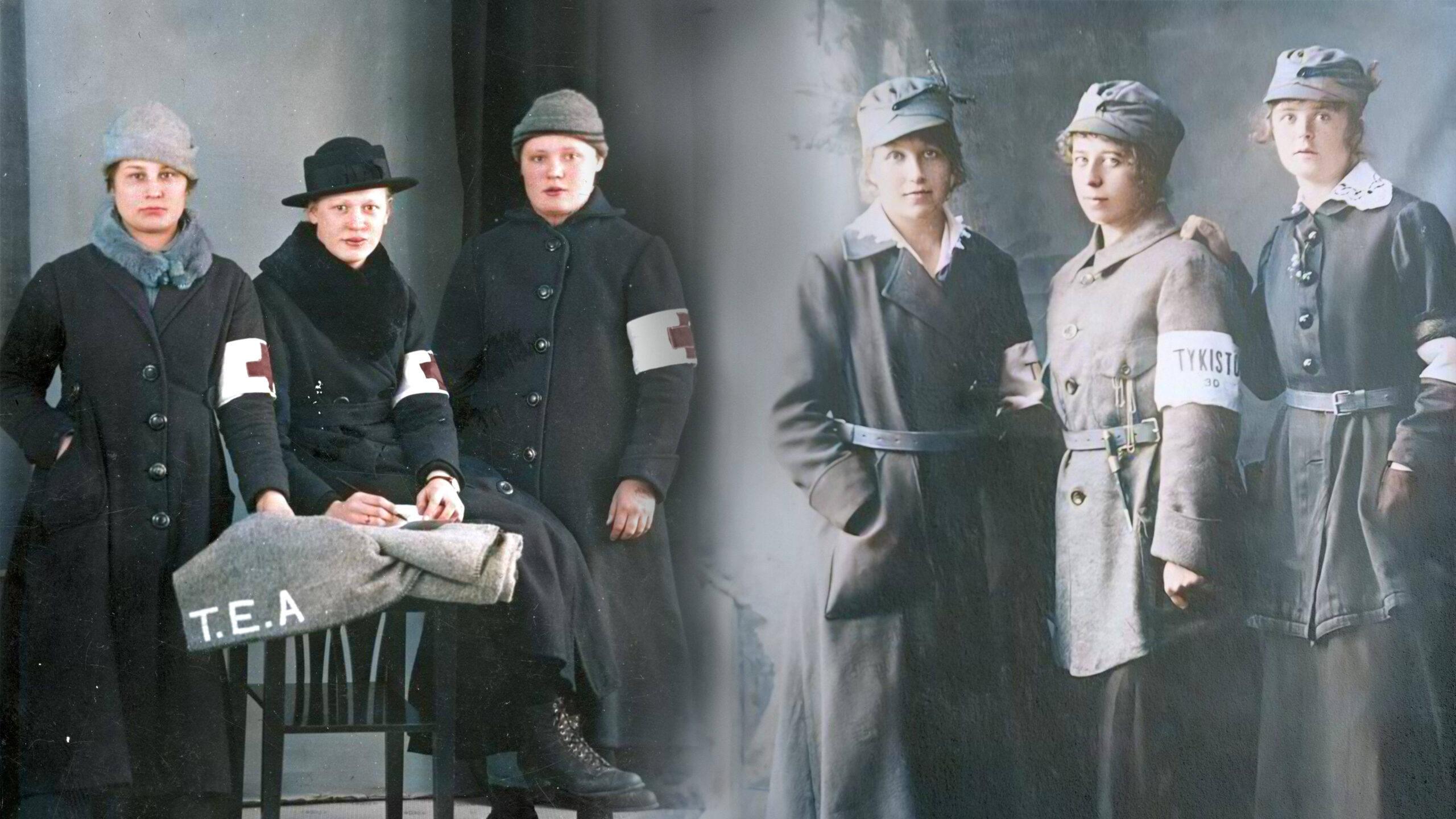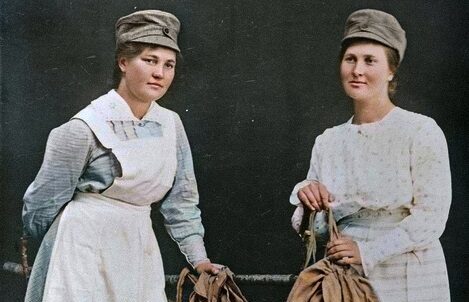The First World War affected children and young people in many ways. As a result of the war, a generation of orphans and fatherless children was growing up in Europe.
Children were innocent bystanders in the war, and efforts were made to ease their conditions by moving them from cities to the countryside and from warring countries to more peaceful ones. In Europe, the war lasted for several years, but in Finland the situation was different. In the spring of 1918, war was fought for a few months, but its consequences reached deep into society. The nation was split into Reds and Whites, which became a dividing line within children’s lives. In reality, the division caused by the civil war affected almost all citizens. Everyone had lost a family member, friend, or neighbor.
The consequences of the war were felt heaviest in families whose relatives had died, disappeared, or been captured in prison camps, in which around 70,000 people were held in the summer and autumn of 1918. The ingredients of disaster brewed in workers’ homes. Families without fathers were left without livelihood, whether they were dead or in prison camps. At the beginning of the 20th century, Finland was an agricultural country, and the Red Guard had specifically been joined by the landless population in the countryside, i.e. agricultural workers, and industrial workers in the cities. Regardless of background, families of both suffered without a breadwinner. According to various reports, the total number of children orphaned as a result of the war was estimated at around 20,000–25,000, of which the overwhelming majority, around 90 percent, were children of the Reds, i.e. Red orphans. There were many orphans in big cities and industrial centers. The material losses caused by the civil war were great, and the young republic was heavily in debt.
The war divided children into Reds and Whites: losers and winners. About 500 children were orphaned in Tampere, whom the government, when organizing grants, called war orphans, but who were colloquially known as Red orphans. The children’s speech was dictated by the same words, terms, and rhymes that they had heard and learned from adults. The children’s lives were marked by chaos and hunger. The children of the Reds who had experienced the war needed to be re-integrated into their homeland. There was even talk about re-education, which was believed to be the task of the national school system. The children had witnessed the destruction and violence brought by the war. They experienced sadness, deprivation and many contradictions in a community returning to peace and seeking integrity.
Urban war through children’s eyes
A mother described the life of children in cities during the war as follows: “the children, too, are so accustomed to seeing bodies that they do not think much of it.” When Tampere, under the Red regime, was under siege by the Whites for a couple of months, children saw members of the Red Guard around the city, their parades, and their funeral processions. Nightly home inspections became an everyday routine. Young boys were especially interested and excited about what was happening in the city. When they heard the sounds of gunfire from within the city, they ran to get a glimpse without knowing fear. The boys moved in groups and saw the brutal reality of war on their excursions. Decades later, 11-year-old Paavo recalled seeing two members of the Red Guard lose their lives: “With a child’s mindset, I didn’t have nightmares when I saw a person die. I thought it was all part of the norm. Not everything came to mind as a child. These events were out of my thoughts for a long time and have now started to return. There’s more time to think.”
“the children, too, are so accustomed to seeing bodies that they do not think much of it.”
When the occupation of Tampere began, families fled from their homes to churches and to the basements of schools, factories, and many public buildings. The sounds of artillery, battle, and grenades carried to the hiding places. Huge fires, blackened, deserted houses and prisoner transport were imprinted in children’s minds during the battle phase. Toini, who was about 10 years old, remembered how her family had been awoken in the night and ordered to flee to safety when the fighting was already near. As the family ran, the sounds of fighting could be heard nearby. Toini recalled: “It’s amazing that I didn’t feel fear. It was just exciting. The adults were afraid.” Toini and her family hid in a basement shelter for two weeks.
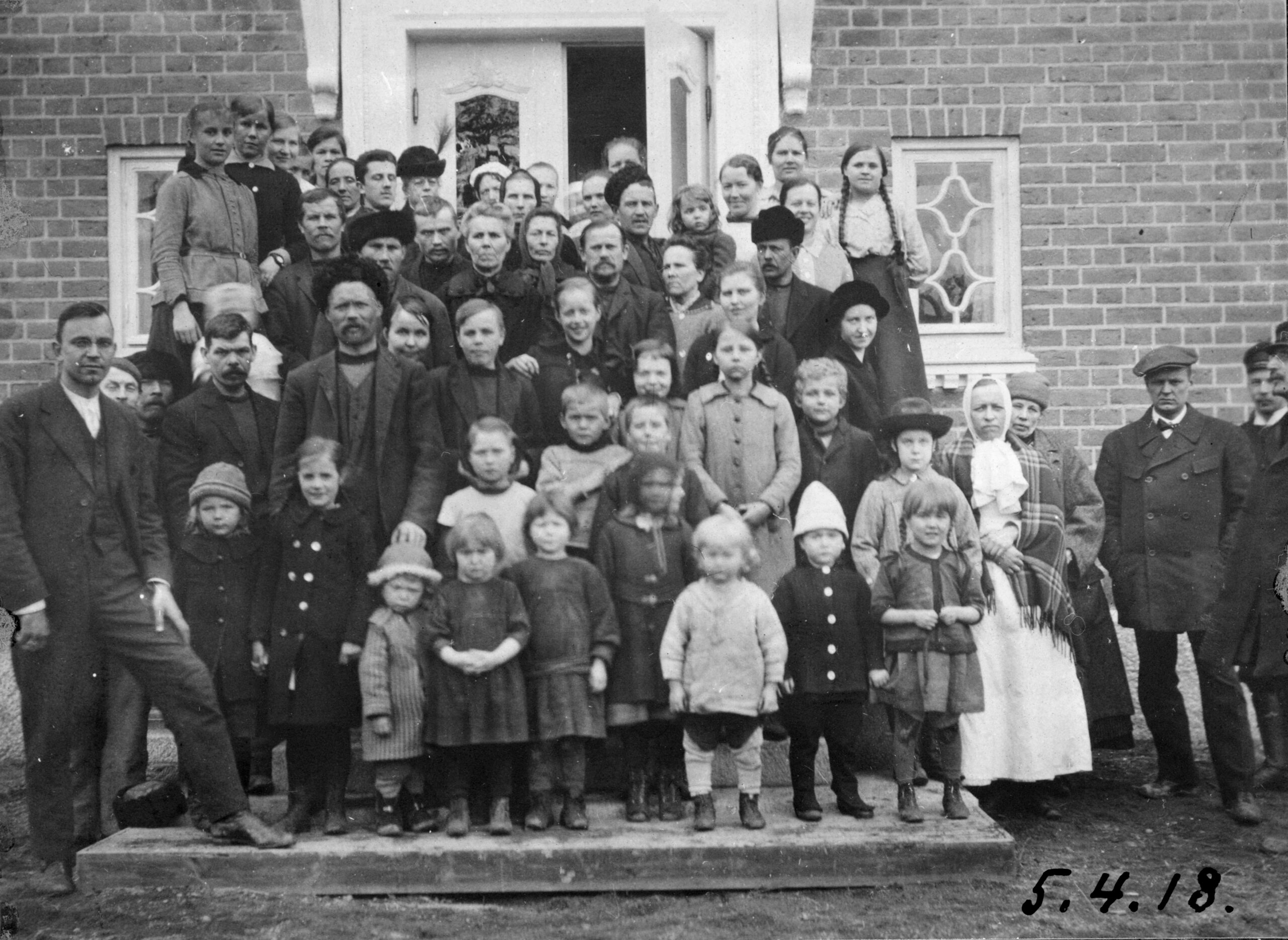
Even though the fighting in the city had stopped, there was a long way to go before peace and normalized conditions. After the capture of Tampere, the massive destruction of the war was revealed. Children and youths walked through the city with their parents to see what was left of their home. Many had their homes destroyed, and it was typical for children to be shown these burnt and broken houses. Windows were shattered, stonewalls and furnaces destroyed, and goods either looted or broken. Even if a household was spared from destruction, many Red families were evicted from their apartments because they had no money to pay the rent, or because the family had lived in an employer’s apartment. Termination of employment meant eviction, as many employers did not take kindly to Red families.
The casualties of battle, hearses, dead horses, rifles, and machine guns were lying along the streets and corners, on display as one walked through. The smell of burning hung over the city, and lines of prisoners at Tampere’s Central Square were imprinted in memory, as they were made to stand in the square before being transferred to the old barracks. Children wandered with their mothers and relatives near the cemetery area, looking for their loved ones among the piles of corpses. Mothers sent children to prison camps to carry food to their fathers, relatives, and neighbors. This work was easier for the children because the camp guards were less aggressive towards them.
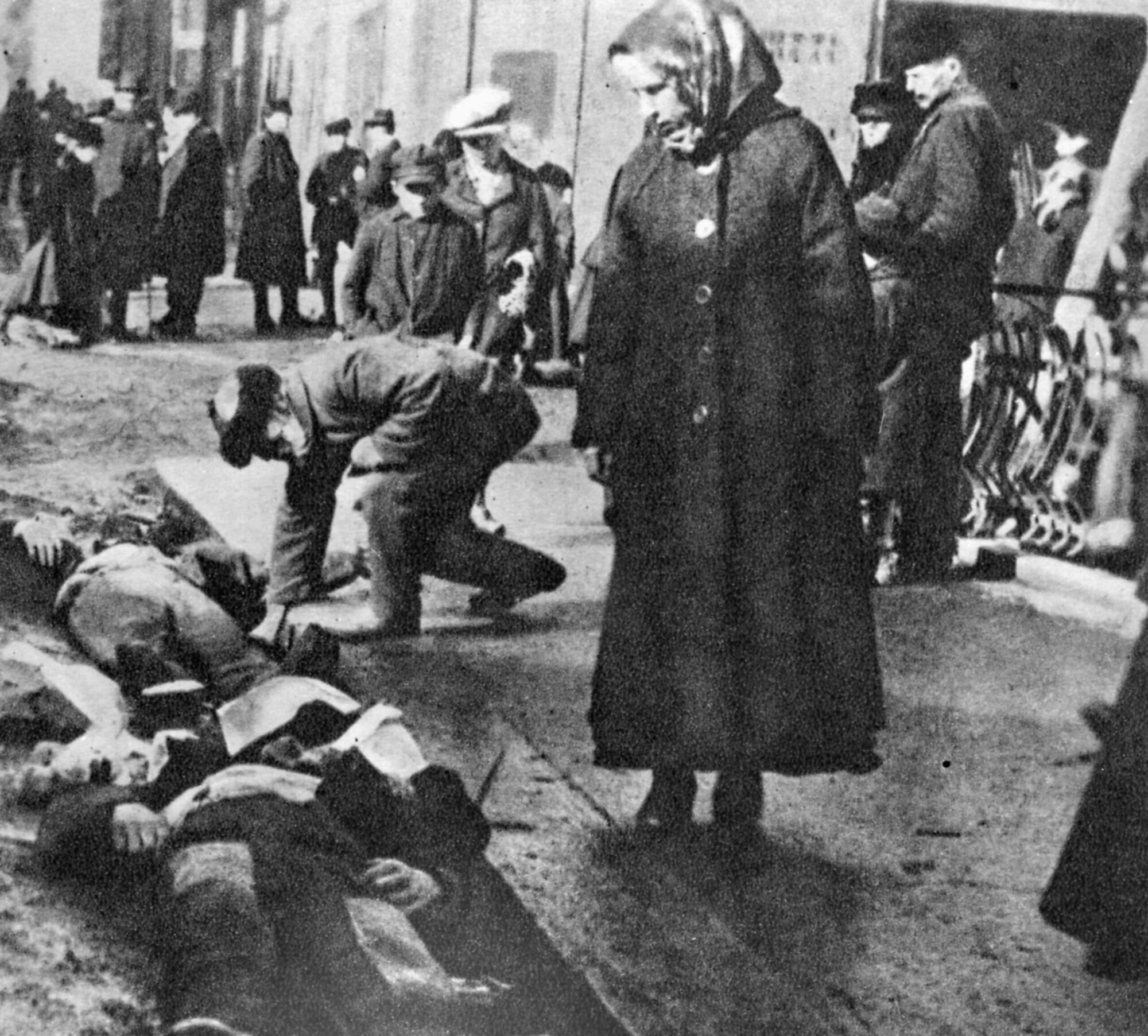
For many children, despite everything, the war was an adventure, even though they acted according to the example set by adults. They observed what was happening around them. As the fallen were being removed from the streets, boys searched through their pockets and things, taking items with them. They did as they saw adults do. Children were driven away from the gruesome sights as much as possible, but there was not always an opportunity to do so in the chaotic city.
Nightly execution shots kept people awake. 11-year-old Paavo recounted how the shots echoed throughout the summer. The war had also made death part of the everyday, as traces were constantly visible in the city. The children also understood that the way the bodies of the Reds were treated was not right. Grief, remembrance, and respect also belonged to the dead of the losing side. About a year after the end of the civil war, on May Day 1919, a group of boys and girls wanted to commemorate the Reds who died in the war. The children knew the location of one of the mass graves and placed a red cloth they brought with them as a flag. It was the children’s own idea, naturally feeling that a token of remembrance must be taken to the grave. They waited to see if someone would come and take their flag down.
Hunger
In the days, weeks and months following the war, boys and girls took part in city life. In Tampere, just as in other cities, there was a food shortage. Children and youths were sent out to line up for provisions in the early hours, but they soon started to come up with their own solutions to alleviate hunger. Groups of boys from neighboring yards and blocks, who had observed the war and toured the city together, went out to beg for food. The boys’ journeys, which lasted several weeks, were often directed to the nearby countryside, for example through Messukylä to Kangasala and further through Pälkäne, Lammi, and Tuulos to Hauho.
Often mothers were not informed of these begging trips, but the boys wanted to ease their burdens. On the other hand, the trips also included a desire for adventure. The boys spent nights in houses and hay barns on their expeditions. The boys developed an instinct for how to act in strangers’ houses in order to get food. Letting the occupants have their say first was beneficial. It was easier to receive food, when one agreed. Hunger also led to theft on trips. One learned to survive in difficult conditions during these begging trips. When these expeditions are described as adventures, it reflects both the experiences of the time and the later narration of events.
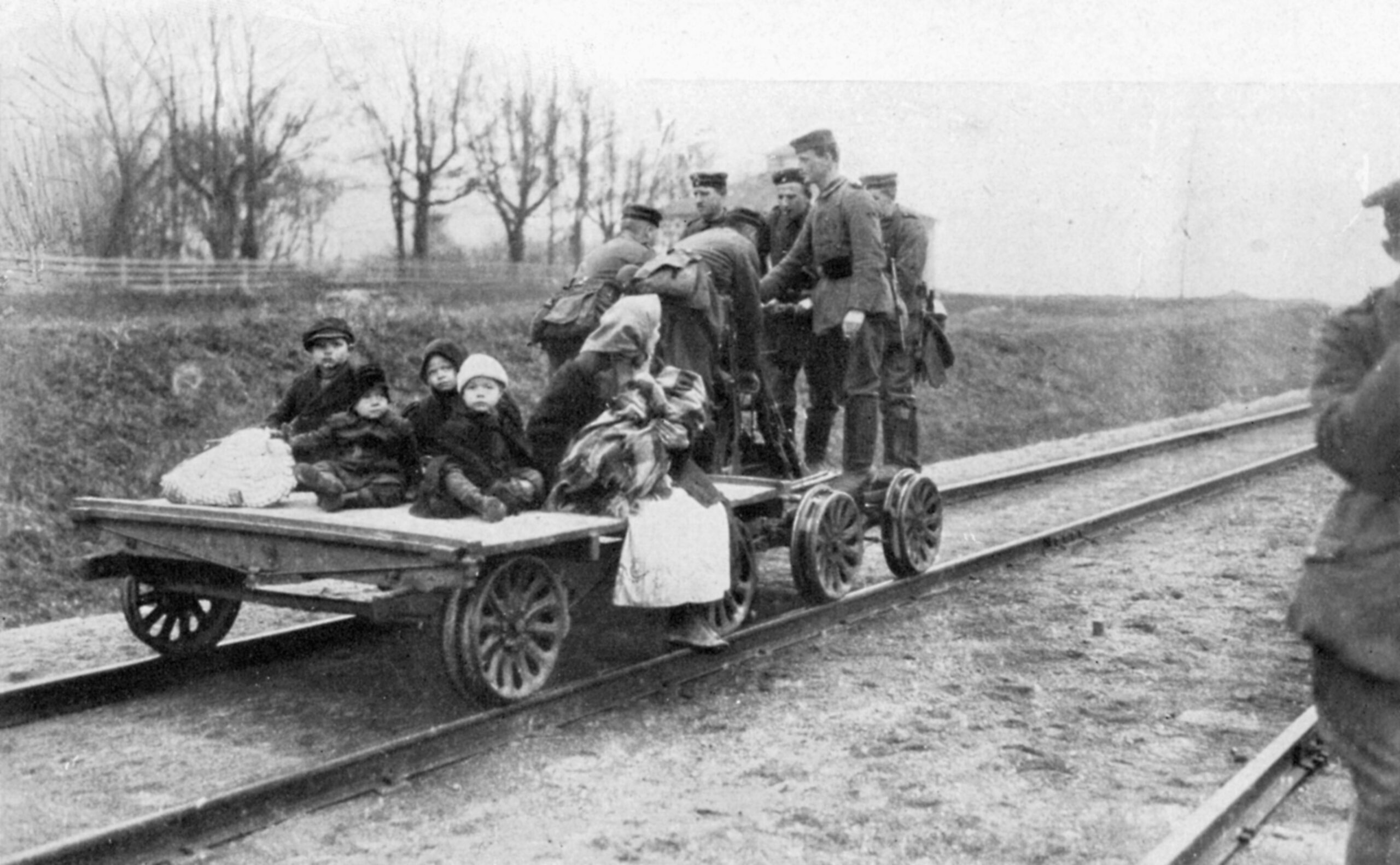
Children’s begging became common not only from door to door, but also in trains and public spaces, markets, and restaurants. In the fall of 1918, newspapers wrote that thousands of child beggars were wandering around Finland in search of a living. Child begging had become systematic and professional, and authorities were trying to stop it. In post-civil war Finland, as elsewhere in Europe, begging was associated with wandering children and juvenile delinquents. Begging was against all the principles of a civilized state. In the fall of 1918, various associations founded shelters for wandering child beggars with state support. Newspapers wrote about their living conditions and urged citizens to do their best to prevent begging.
“No sympathy. Society didn't think. We tried to keep quiet. Were kept quiet. The vanquished must be content licking their wounds. Those who survived tried to lick their wounds."
Charitable associations began appealing to emotions to help shift the mood toward helping children. Advertisements inviting citizens to participate in relief work were published in newspapers. In the midst of crisis, people needed to be merciful and forgiving. A misfortune had befallen the homeland, but a new Finland had to be built, one where children could not be abandoned – the growing, new generation. In other words, the children were to be forgiven, even if the actions of their parents were condemned.
The role of the Finnish state and the precepts created by official decisions played a more extensive role in the aid of orphans than charitable associations. There were both Red and White orphans in Finland, and they were assisted differently. White orphans and widows received a state pension, while Red families were assisted through municipal care for the poor. Municipal aid was given only in situations where the family could not manage on its own. White families received pensions regardless of the family’s wealth. During the First World War, a pension system was created for widows and orphans in Germany, France, and England, but such a system could not be fathomed for the families of those who joined the rebellion and revolution in Finland in the years immediately following the war. In Finland, the state acknowledged its responsibility for the livelihood of the Red population when it started paying state aid to cities, municipalities, and charitable organizations if they helped the families of the Reds. However, the construction of an aid organization started immediately after the civil war and was the first step towards integration.
Red widows and orphans no longer remembered the existence of the state aid system in the 1970s. One reason for this may be the nature of the grant, which was aimed at helping the poor. Hunger, cold, and all kinds of scarcity resulted in the feeling that no one cared what happened to them. Otso, who experienced the war when he was around 7-8 years old, described his feelings 50 years after the war: “No sympathy. Society didn’t think. We tried to keep quiet. Were kept quiet. The vanquished must be content licking their wounds. Those who survived tried to lick their wounds.”
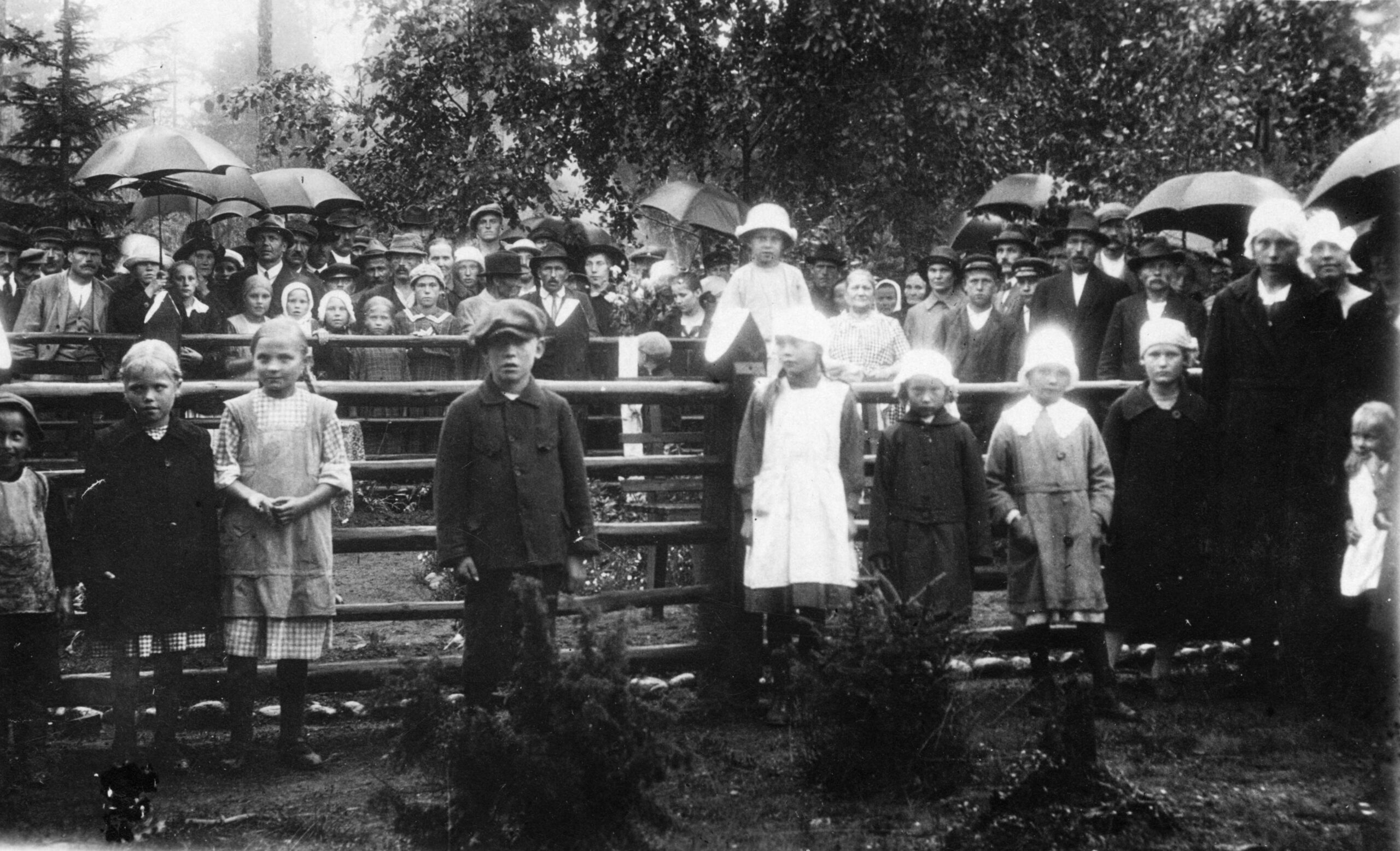
Upbringing
Schools in Tampere had been closed during the war, but after a two-month break, they were re-opened in mid-April, and students had to return to school. At first, lessons were hindered by space problems, as parts of the school buildings had been submitted to military use. Maria Laurila, a grammar schoolteacher from Tampere, went to students’ homes to pick them up for school. The teacher said she wanted to get students off the streets and keep them from seeing and hearing all the evil that the war had left behind. At the same time, educational journals wrote about the future mission of public schools and demanded the implementation of compulsory education.
Some of the teachers in Tampere started the school year by inquiring about the students’ home conditions and asking about their father’s participation in the war. The students responded quickly, and many were proud that their father had been a member of the Red Guard. On the other hand, those students whose father had died or was still in a prison camp behaved shyly and preferred to keep quiet about household matters. Some of the students’ answers shocked the teachers when, for example, they heard students reply that “My father was shot as a rebel. I don’t have a father.” Children also repeated words and phrases they had heard in adults’ conversations. Students knew that the teachers were on the winning side.
All the tragic consequences of war were encountered in the classroom. The homeland of the teachers was unconditionally the Finland of the White victors. However, the re-education of Red children as patriotic citizens of the newly independent Finland was felt to be possible with the help of public schools and civic education. According to the harmonization policy of the state and the school board, teachers were required to have social awareness and knowledge of people. Their job was to bridge class differences, so they had to try to bring children from different social classes together.
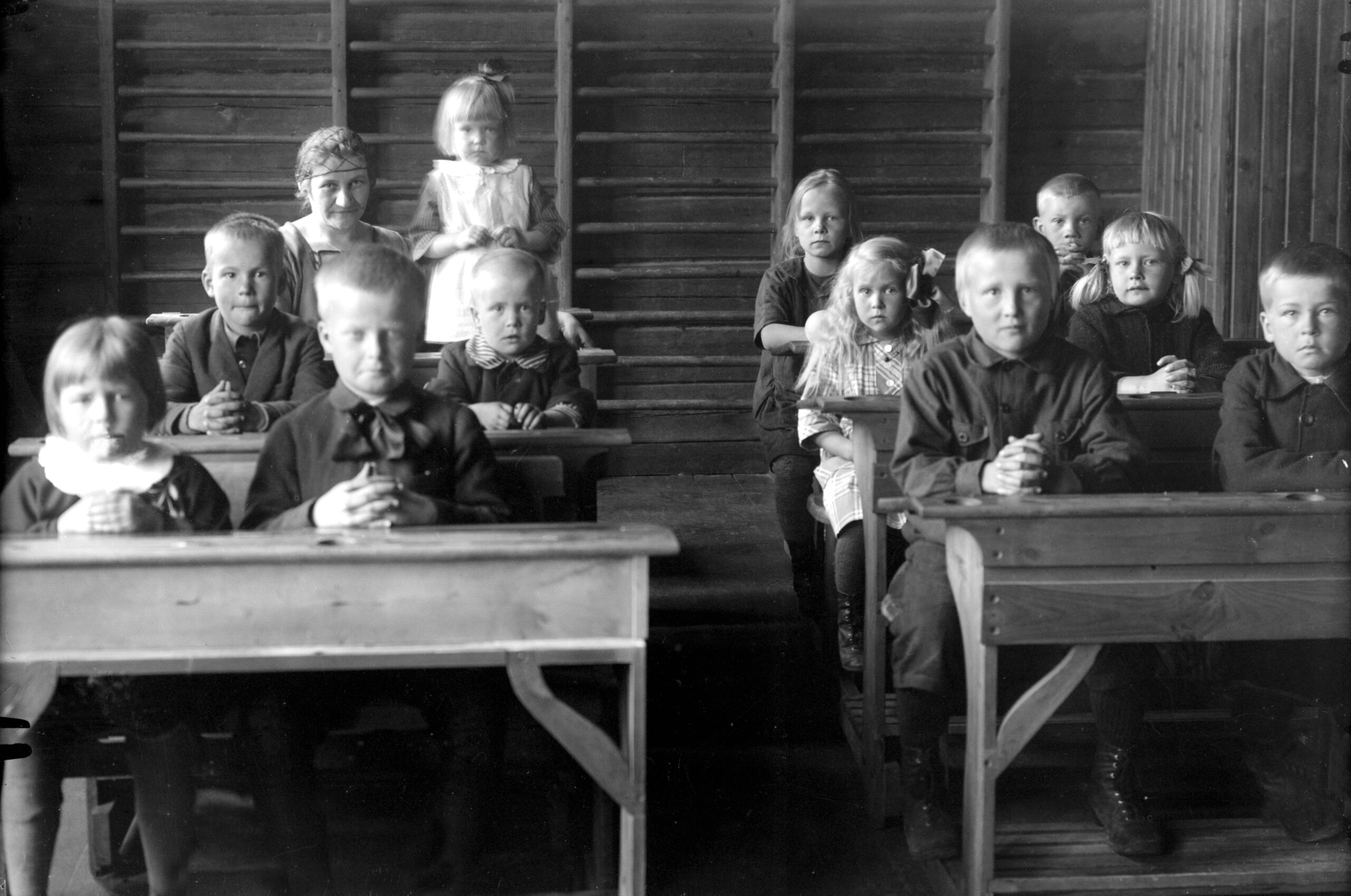
Regardless of their own worldview, teachers were expected to show compassion and be open-minded towards Red children. Teachers were allowed to express political opinions, but not agitation. The situation in Tampere was unique because in the municipal elections at the end of 1918, the Social Democrats won the majority in the city council. Thanks to municipal democracy, the Social Democratic Party got their representatives on the municipal school board to decide on school matters. These city councilors brought a social understanding of the conditions of Red children and especially Red orphans to decision-making.
"My father was shot as a rebel. I don't have a father."
Poverty was visible in the classrooms. Children from poor families, and especially orphans, received shoes and clothes through schools as part of municipal aid. These clothes clearly gave away their family background. In order for children to receive shoes, coats, and pants, the teacher had to write a certificate of poverty. This was one way in which the public school system and municipal authorities tried to help poor families. For the children, this well-intentioned procedure caused feelings of humiliation and shame. They were annoyed that their clumsy black shoes and the color and quality of the textiles they wore revealed the origin of the clothes. The knock of the clog said much about its wearer. When a child had no shoes of their own, they borrowed from older siblings. Boys often wore their father’s old shoes, in some cases even those of their older sisters, and were bullied as a result. Social differences and conflicts as well as home conditions were visible in the schools, i.e. whether both parents were alive and whether the father had a permanent job.
Toini recalled: “The children themselves began to form a divide during the war. There were children of the Reds and children of the Whites, or Lahtarit (butchers). I was the child of a Lahtari, my friend was the daughter of a landlord. We were Whites and the tenant’s daughter called us the butcher’s children, while we called her the servant’s brat.
Eino described the emotions that arose in the classroom when the teacher talked about patriotism. The boys whistled and booed at the teacher. Four fingers were placed in the mouth and then the booing started. Eino testified that the teacher’s speech was a waste of time. The school’s patriotic celebrations failed to arouse only warm feelings towards the homeland, which was their goal. At the Independence Day celebration, the boys refused to sing Paavo Cajander’s patriotic song Nostakaa malja isänmaalle (Raise a glass to the fatherland), which includes the words “One power is hidden in the heart. That power is pure and holy.” The boys’ behavior made the teacher lose her temper. Instead, the schoolchildren sang mocking songs about the war hero and commander-in-chief of the White Army, General Mannerheim. Eino also recalled that they had had a singing test where the students could decide for themselves which song they would sing. Eino decided to sing an old Finnish labor movement song (Työväen marssi, “The Workers’ March). He sang the whole song, after which the teacher expressed her opinion by giving him a bad grade.
The Little Red Guard and neighborhood wars
The war continued in children’s games, and the Battle of Tampere was once again fought in backyards and nearby forests. Children became more aware of political dividing lines. However, students did not fight in the school yards during recess, and there was a gentleman’s agreement that teachers would not intervene in fights on the way to school. Several “Little Red Guards” were established around Tampere and the boys formed their own armies with companies and commanders. Young boys aged five to twelve wore wooden swords with metal tips on their belts. They wandered the city looking for traces of battle, made gunpowder mixtures and hand grenades, and organized firefights. All this was dangerous, and injuries occurred.
In Tampere, one way of expressing feelings toward people deemed White was to annoy them by throwing stones on their roof and running away. The schoolboys’ rebellion became concrete when in April 1921 a commemoration of the Battle of Tampere was organized, along with the unveiling of the “Statue of Liberty” in honor of the White victors in Tampere. The boys named this celebration the “butcher’s market”. A group of schoolboys who worked as shoe shiners watched this ceremony angrily with tears in their eyes. They stood alone with their fists in their pockets, but after the ceremony the boys launched an attack on the statue by pelting it with cans of shoe polish.
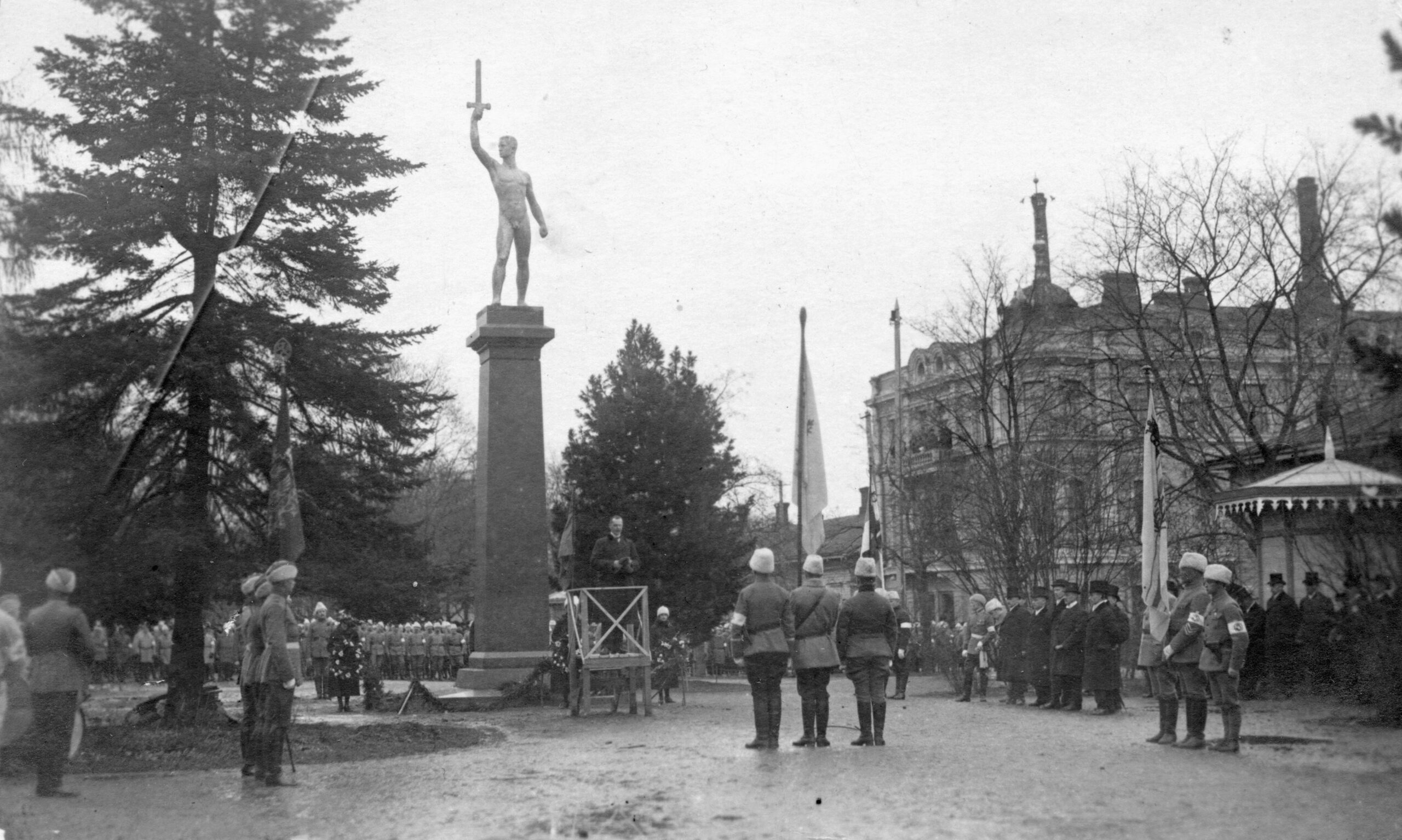
Social integration was implemented with the help of the Compulsory Education Act. The law entered into force in 1921, and it entitled everyone to free education, regardless of gender, language, or social class. The new legislation brought children between the ages of 7 and 14 into the scope of compulsory education. In practice, however, all school-age children in Tampere had attended public schools since the beginning of the 20th century. This meant that children from all social classes met in the classroom. In the 1920s and 1930s, Finnish public schools emphasized the patriotic values of the nation-state, but the city wars, begging trips, and demonstrations of the Tampere children and youths at school were an indication of their resistance in the social crisis and in its aftermath, as it was felt that no one cared.
Sources and literature
Interview: Tampereen poliittinen perintö. Kansanperinteen arkisto. Tampereen yliopisto.
Junila, Marianne, ”War through the Children’s Eyes” In The Finnish Civil War 1918: History, Memory, Legacy. Ed. Tuomas Tepora & Aapo Roselius, Brill 2014.
Haapala, Pertti & Hoppu, Tuomas (toim.), Sisällissodan pikkujättiläinen. WSOY 2009.
Kaarninen, Mervi, ”Tamperelaiset sotaorvot.” In Tampere 1918. Vapriikki 2008.
Kaarninen, Mervi, “Sotaorvot.” Teoksessa Sisällissodan pikkujättiläinen. Ed. Pertti Haapala & Tuomas Hoppu, WSOY 2009.
Kaarninen, Mervi, “The long War of the Orphans.” Teoksessa Tampere 1918. A Town in the Civil War. Editors Pertti Haapala and Tuomas Hoppu. Vapriikki 2010.
Kaarninen, Mervi, Punaorvot. Minerva 2017.
Laakso, Minna, Kyllä se oli sentään kauhea aika: Tamperelaisten tyttökoululaisten kirjoituksia Suomen sisällissodasta syksyltä 1918. Tampere university, history. Master’s thesis. (https://urn.fi/URN:NBN:fi:tuni-201910103793)
Malinen, Antti ja Tamminen, Tuomo, Leikitäänkö. Lasten kaverisuhteet 1900-luvun Suomessa. Gaudeamus 2022.
Vehkalahti, Kaisa et.al.(eds.) Matkaopas lapsuuden historian tutkimukseen. Monitieteisiä näkökulmia ja menetelmiä. SKS 2022.

